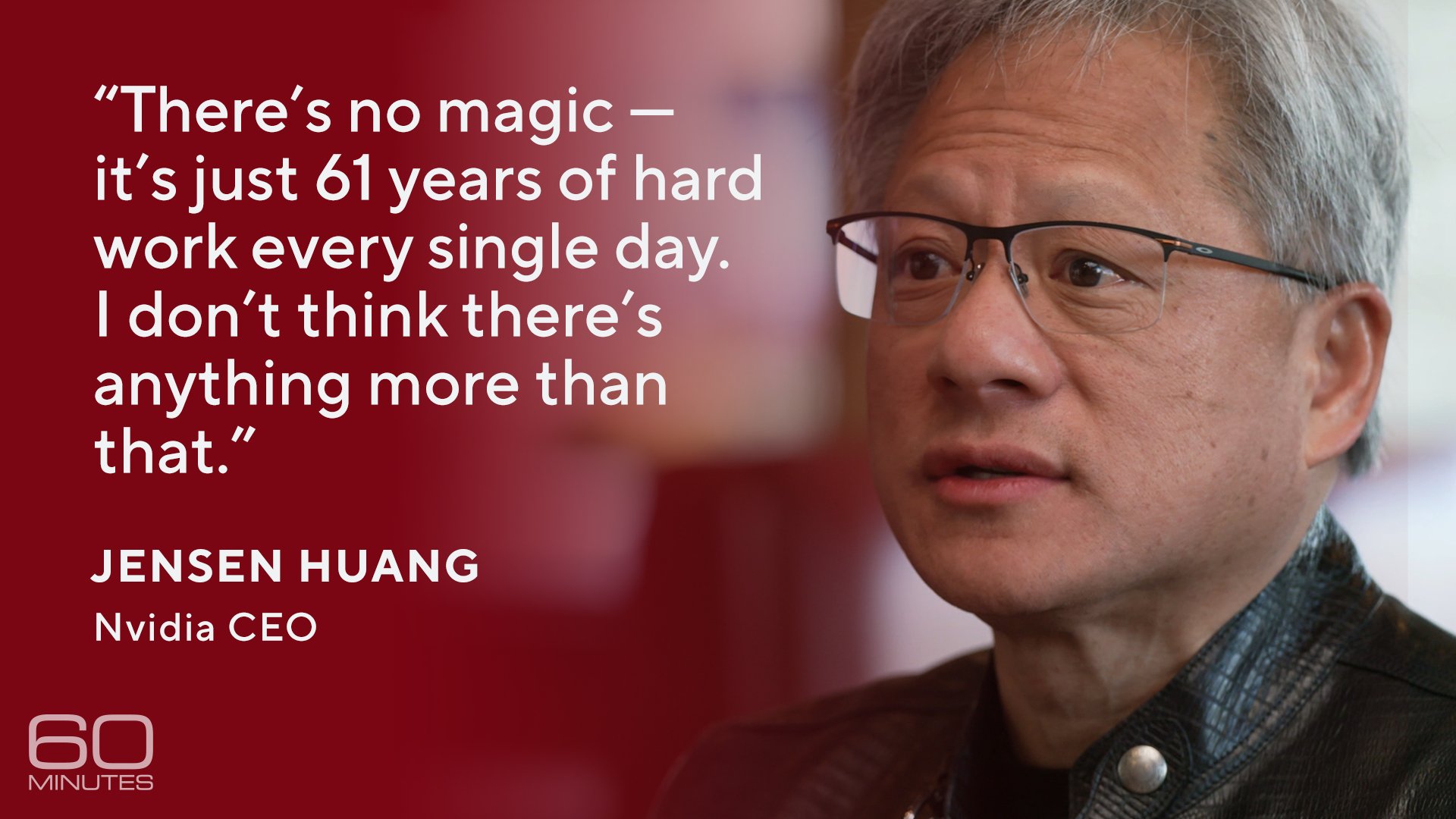Introduction: The Rise Of A Tech Titan
NVIDIA has become synonymous with technological breakthroughs, consistently pushing the limits of what’s possible in computing and artificial intelligence (AI). Known initially as a graphics card maker, NVIDIA has evolved into one of the most innovative companies globally, achieving a market valuation of over a trillion dollars. But how did NVIDIA go from a small startup to a powerhouse transforming entire industries, from gaming to AI, healthcare, and autonomous driving? Let’s explore the story behind NVIDIA’s meteoric rise and what the future holds.

Early Stages: From Humble Beginnings To Major Milestones
Founded in 1993 by Jensen Huang, Chris Malachowsky, and Curtis Priem, NVIDIA began with a simple but ambitious goal: to create a cutting-edge graphics card for PC gaming. The founders recognized early on that the gaming industry’s demand for high-quality visuals required innovations in processing power. At the time, graphics processing units (GPUs) were virtually non-existent, and NVIDIA set out to develop this revolutionary technology.
- Early Graphics Innovations: In the 1990s, graphics cards were basic, often limited to rudimentary 2D graphics. NVIDIA’s focus on enhancing real-time 3D graphics led to the RIVA 128 release in 1997, a card that offered breakthrough graphics performance, marking NVIDIA as a force in the industry.
- Growth and IPO: In 1999 the company went public, raising capital to fuel its research into more advanced graphics processing. The IPO helped NVIDIA secure a stronger financial foundation, accelerating R&D and product innovation.
The Breakthrough: Changing The Game With GPUs
NVIDIA’s turning point came in 1999 with the introduction of the GeForce 256, the world’s first graphics processing unit. This groundbreaking GPU transformed graphics rendering, enabling computers to handle complex graphics and image processing tasks faster and with greater accuracy than ever before. The GeForce line rapidly grew in popularity, becoming a staple in gaming and eventually spilling over into industries requiring advanced computational power.

- The CUDA Platform: In 2006, NVIDIA released CUDA (Compute Unified Device Architecture), which allowed GPUs for various non-graphics tasks, including complex simulations, scientific calculations, and deep learning. CUDA’s open-source platform enabled researchers and developers to use GPUs for data processing in diverse fields, marking NVIDIA’s foray into AI and machine learning.
- AI and Deep Learning: The combination of powerful GPUs and CUDA enabled large-scale computations needed for deep learning algorithms. NVIDIA’s GPUs became the backbone for AI research, contributing significantly to natural language processing, image recognition, and medical diagnostics.
The Visionary CEO: Jensen Huang
At the helm of NVIDIA’s success is Jensen Huang, the company’s co-founder and CEO, known for his visionary leadership and unwavering dedication to innovation, Huang has been instrumental in steering NVIDIA through multiple industry shifts. Under his leadership, NVIDIA pivoted from being solely a gaming hardware company to a key player in AI, data science, and high-performance computing, earning its reputation as a transformative tech giant.
Huang’s ability to identify and capitalize on emerging trends has propelled NVIDIA to diversify its offerings, from gaming to data centers, automotive solutions, and beyond. His ambitious roadmap has made NVIDIA indispensable across multiple tech sectors.
What NVIDIA Is Known For: The GPU Pioneer
NVIDIA is primarily known for pioneering GPUs, which are now crucial not just for gaming but also for AI and machine learning applications. NVIDIA’s GPUs are capable of handling the high-complexity data processing required in AI, making them a core component in deep learning frameworks like TensorFlow and PyTorch. Its CUDA architecture enabled developers to harness GPU power for non-graphics tasks, a game-changer that expanded NVIDIA’s reach beyond gaming.
NVIDIA’s reputation is built on pioneering GPU technology, which has evolved beyond graphics to power complex computations and AI applications.
- Gaming: NVIDIA’s GeForce lineup has become synonymous with high-performance gaming, enabling photorealistic graphics, immersive VR experiences, and real-time ray tracing. Gamers, streamers, and developers rely on NVIDIA GPUs for superior performance.
- AI and Machine Learning: As AI demand has exploded, NVIDIA’s GPUs have become integral for deep learning and neural networks. Companies and institutions globally depend on NVIDIA’s hardware to train and deploy AI models efficiently.
- Data Centers: With the rise of cloud computing and data-driven services, NVIDIA now supplies GPUs for leading data centers worldwide, optimizing machine learning processes, data analysis, and high-performance computing (HPC) workloads.
A Trillion-Dollar Valuation and Market Dominance
In 2023, NVIDIA achieved a milestone that few companies reached—a trillion-dollar market valuation. This milestone underscored NVIDIA’s critical role in the tech industry and its growing influence across various sectors. NVIDIA now holds a significant share of the GPU market and is a leading supplier of high-performance computing, AI development, and data center infrastructure, placing it at the forefront of global technological advancement.
- Dominance in the GPU Market: NVIDIA holds nearly 80% of the GPU market, outpacing rivals like AMD. Its cutting-edge technology and consistent innovation have established NVIDIA as the go-to choice for GPUs, giving it substantial influence in AI, computing, and graphics.

- Global Reach: NVIDIA’s technologies power a range of products across industries, from data centers to smart devices, with leading companies like Tesla, Google, and Amazon relying on NVIDIA GPUs for key applications.
Expanding Influence: NVIDIA’s Role Across Industries
NVIDIA’s innovations have extended far beyond gaming, impacting fields such as:
- Healthcare: NVIDIA’s AI-powered GPUs are used to develop advanced diagnostics, genomics research, and personalized medicine.
- Automotive: Autonomous vehicle systems, such as Tesla’s Autopilot, utilize NVIDIA’s powerful computing to process data from vehicle sensors and enable safe self-driving capabilities.
- Robotics and Manufacturing: NVIDIA’s AI platforms support robotics, enabling intelligent automation in factories, agriculture, and logistics.
- Finance: AI-powered trading algorithms and risk management systems use NVIDIA’s technology for fast and efficient data analysis.
Motivation Behind NVIDIA’s Innovations
The motivation driving NVIDIA’s relentless pursuit of innovation is rooted in the company’s dedication to solving the most complex computing challenges.
Huang and his team recognized early on the potential of GPUs not just for enhancing gaming experiences but for redefining computing itself. This mission-oriented approach has inspired the company to invest heavily in AI, supercomputing, and deep learning, bringing capabilities once thought impossible into mainstream applications.
Game-Changing Technologies: Powering The Future
NVIDIA’s game-changing technologies include the NVIDIA Omniverse for 3D design collaboration, DGX systems for AI and deep learning, and RTX GPUs for real-time ray tracing in gaming. Their Grace Hopper Superchip combines CPU and GPU in one, aiming to accelerate AI and high-performance computing workloads significantly. With the NVIDIA DRIVE platform, the company is also pushing the envelope in autonomous driving, providing carmakers with the technology to develop safer, smarter vehicles.
NVIDIA’s innovations have far-reaching impacts on multiple tech landscapes:
- Omniverse: NVIDIA’s Omniverse platform allows designers and engineers to collaborate in a virtual 3D world, enabling real-time simulation and visualization across industries.
- DGX Systems: DGX is NVIDIA’s line of powerful AI systems that provide enterprises with the infrastructure needed to develop and deploy AI at scale, used by leading organizations for machine learning and AI research.
- RTX and Real-Time Ray Tracing: NVIDIA’s RTX series introduced real-time ray tracing for gaming, creating photorealistic lighting and shadow effects, reshaping the gaming and visual effects industries.
- Grace Hopper Superchip: This superchip combines CPU and GPU technologies to address AI and high-performance computing challenges, targeting complex workloads in scientific research, simulations, and large-scale AI models.
Future Plans: Where NVIDIA Is Headed Next
NVIDIA’s ambitions stretch far into the future, with goals to advance AI, expand its Omniverse platform, and deepen its reach in autonomous technology. The company is also focused on enhancing its data center solutions to meet the increasing demands for high-performance computing. NVIDIA’s continued R&D in AI-driven solutions, along with strategic acquisitions and partnerships, signals that it plans to remain a key player in the future of technology across all sectors.
- Expanding Omniverse: The company is enhancing Omniverse to support 3D design collaboration, enabling digital twin simulations for manufacturing, infrastructure, and city planning.
- Advancing AI: NVIDIA aims to expand its leadership in AI through continued innovations in GPUs, AI frameworks, and developer tools, supporting industries from healthcare to entertainment.
- Data Center Expansion: NVIDIA is building more advanced GPU infrastructure to support high-performance computing, with an emphasis on efficiency and scalability for next-gen AI solutions.
- Autonomous Systems: NVIDIA continues investing in autonomous driving, robotics, and AI-driven automation, with a vision to make intelligent systems a reality across sectors.
NVIDIA’s Sustained Success Stems From Its Core Principles

- Continuous innovation
- Long-term strategic thinking
- Heavy investment in R&D
- Strong developer ecosystem
- Adaptability to market changes
Conclusion: NVIDIA’s Lasting Impact On The Tech World
NVIDIA has not only transformed gaming but has reshaped how industries leverage technology for growth, innovation, and efficiency. With a visionary CEO, groundbreaking technology, and a stronghold across sectors, NVIDIA’s influence is profound and still growing. As it pioneers advancements in AI, autonomous vehicles, and high-performance computing, NVIDIA is poised to remain a dominant force in shaping the technological landscape. From humble beginnings to a trillion-dollar powerhouse, NVIDIA’s story is a testament to the power of innovation, resilience, and visionary leadership in transforming industries and driving the future of technology.
Visit Woocur, For More Such Blogs
Thank you for reading 🙂







